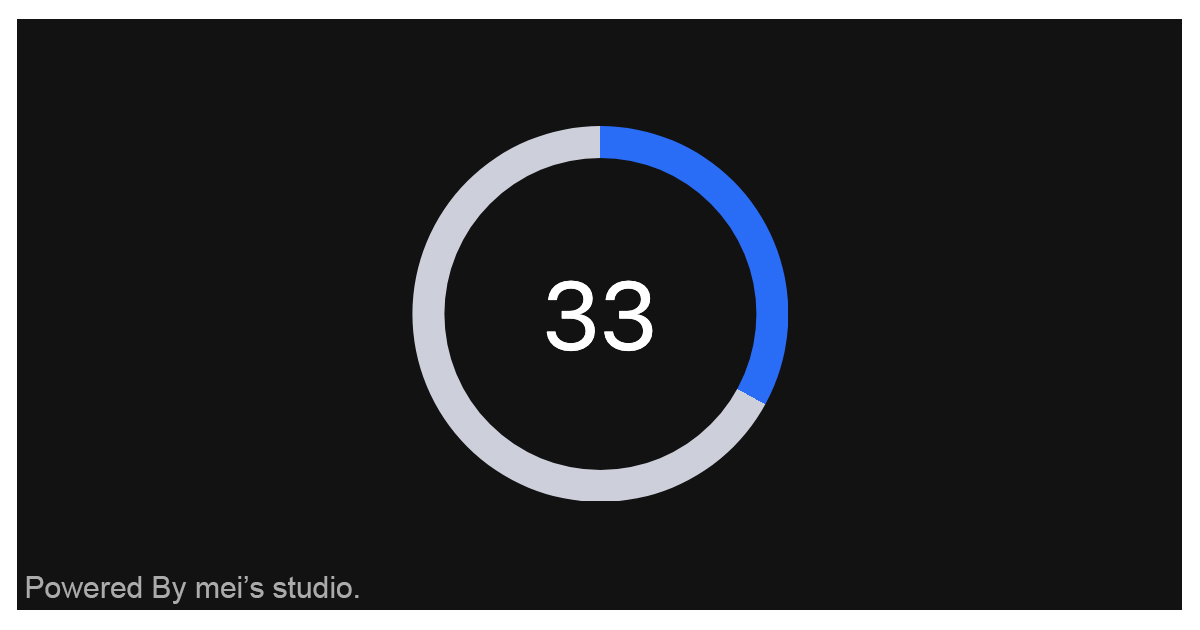msc-circle-progress


<msc-circle-progress /> provides progress with circle shape. Developers could use it to indicate upload、form complete status for users.

Basic Usage
<msc-circle-progress /> is a web component. All we need to do is put the required script into your HTML document. Then follow <msc-circle-progress />'s html structure and everything will be all set.
<script
type="module"
src="https://your-domain/wc-msc-circle-progress.js">
</script>
Put <msc-circle-progress /> into HTML document. It will have different functions and looks with attribute mutation.
<msc-circle-progress>
<script type="application/json">
{
"size": 16,
"value": 33,
"max": 100,
"round": true
}
</script>
</msc-circle-progress>
Otherwise, developers could also choose remoteconfig to fetch config for <msc-circle-progress />.
<msc-circle-progress
remoteconfig="https://your-domain/api-path"
>
</msc-circle-progress>
JavaScript Instantiation
<msc-circle-progress /> could also use JavaScript to create DOM element. Here comes some examples.
<script type="module">
import { MscCircleProgress } from 'https://your-domain/wc-msc-circle-progress.js';
const nodeA = document.createElement('msc-circle-progress');
document.body.appendChild(nodeA);
nodeA.value = 50;
nodeA.size = 10;
const nodeB = new MscCircleProgress();
document.body.appendChild(nodeB);
nodeB.value = 60;
nodeB.size = 20;
const config = {
size: 20,
value: 0,
max: 100
};
const nodeC = new MscCircleProgress(config);
document.body.appendChild(nodeC);
</script>
Style Customization
Developers could apply styles to decorate <msc-circle-progress />'s looking.
<style>
msc-circle-progress {
--msc-circle-progress-font-size: 16px;
--msc-circle-progress-font-color: #232a31;
--msc-circle-progress-color: #0f69ff;
--msc-circle-progress-placeholder-color: transparent;
}
</style>
Otherwise, apply pseudo class ::part(value) to direct style text element.
<style>
msc-circle-progress::part(value) {
font-size: 40px;
color: #fff;
line-height: 1.5;
}
</style>
Attributes
<msc-circle-progress /> supports some attributes to let it become more convenience & useful.
Set size for <msc-circle-progress />. It will change progress size. Default is 20 (not set).
<msc-circle-progress
size="20"
>
...
</msc-circle-progress>
Set value for <msc-circle-progress />. Default is 0 (not set).
<msc-circle-progress
value="0"
>
...
</msc-circle-progress>
Set max for <msc-circle-progress />. Default is 100 (not set).
<msc-circle-progress
max="100"
>
...
</msc-circle-progress>
It will switch <msc-circle-progress /> bar as round once set. Default is false (not set).
<msc-circle-progress
round
>
...
</msc-circle-progress>
Properties
| Property Name | Type | Description |
|---|
| size | Number | Getter / Setter for size. Default is 20. |
| value | Number | Getter / Setter for value. Default is 0. |
| max | Number | Getter / Setter for max. Default is 100. |
| round | Boolean | Getter / Setter for round. Default is false. |
Method
| Method Signature | Description |
|---|
| refresh | Force refresh <msc-circle-progress />'s redering. Developers could call this method when <msc-circle-progress /> mutated. |
Reference





